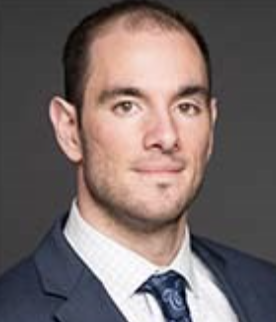The global business landscape faced disputes beyond COVID-19 and it’s trickle-down effect in 2020. Robert D. Chesler, Nicholas M. Insua and John P. Lacey Jr., of Anderson Kill, dive into the environment and social occurrences that resulted in insurance disputes and liability exposures.
While history will remember 2020 as the year of the pandemic, other social and environment ills inevitably persisted. Each of these sources of harm resulted in corporate liability exposures and concomitant insurance disputes. This article examines the insurance issues created by five areas of increasing social and business importance: COVID-19, sex abuse, pollution, opioids and biometrics.
COVID-19 Business Interruption
This is the most recent and most litigated new insurance coverage area. Estimates are that policyholders have filed nearly 1,500 coverage suits, with more than 100 decisions to date. It remains far too early to make any predictions about this litigation’s ultimate outcome; no appellate court has ruled yet on COVID-19 business interruption coverage. However, several broad parameters exist.
COVID-19 business interruption insurance involves two major coverage issues: whether COVID-19 business inter-ruption constitutes direct physical loss or damage, and the effect of any virus exclusion. In a number of cases, insurance companies have successfully brought motions to dismiss COVID-19 suits on the basis that no direct physical loss or damage occurred. However, in many of those cases, the complaints were poorly drafted and failed to allege physical loss or damage. In several more recent cases, including suits in Missouri, New Jersey and Virginia, courts have found that COVID-19 constitutes direct physical loss or damage. The parties will fight this issue in each state, and results will vary.
Surprisingly, the virus exclusion has been less litigated, as many insurance companies have brought motions to dismiss based solely on the direct physical loss or damage issue. However, several courts have dismissed policyholder suits on the basis of virus exclusions. Policyholders, though, have also had victories in this area, most notably in the recent decision in Elegant Massage, in which a federal district court in Virginia ruled that the virus exclusion does not apply because the virus that causes COVID-19 (SARS-CoV-2) was not present at the plaintiff ’s property and was not the basis for the income loss. Policyholders must remember that not all exclusions for contamination or pollution name viruses, and even those that do may not apply in all circumstances. Arguments are also likely to be made about whether the virus exclusion was approved by state regulators based on alleged misrepresentation by the insurance industry when seeking regulatory approval.
Sex Abuse Insurance
In 2019-20, many states extended (or effectively eliminated) statutes of limitation for sex abuse claims, leading to a tsunami of claims by individuals asserting that they were molested many years ago. This litigation wave has led to a second wave of coverage litigation. Sex abuse is bodily injury, and general liability policies provide coverage. However, two coverage issues have emerged. First, when claims date back to the 1970s and even earlier, how does a policyholder prove the existence and terms and conditions of these old insurance policies? Second, policyholders must contend with assertions by insurance companies that the policyholder “intended or expected” abuse.
Companies must be cognizant that they need not produce actual insurance policies to prove coverage but can prove coverage through secondary evidence. In most states, the standard is the preponderance of evidence, and it may be possible to meet that burden with very limited evidence. In addition to the existence of the policy, the policyholder must also prove its terms, conditions and policy limit. These can be proven through expert testimony, particularly since insurance companies typically used standardized policies.
Locating old insurance policies is a challenge. Most companies will not have easily accessible evidence of such policies from 30-40 years ago. Many policyholders utilize insurance archaeologists who are trained in locating policies to perform the search.
Policyholders can expect their insurance companies in many cases to actively litigate whether the policyholder intended or knew of the abuse. Underlying plaintiffs assert that organizations ranging from the Roman Catholic Church to the Boy Scouts had knowledge of sex abuse and concealed it. Policyholders can expect careful scrutiny of their past practices by insurance companies seeking to deny coverage. Policyholders must remember that the duty to defend is much broader than the insurance company's duty to indemnify, and as long as questions exist as to whether the insured acted intentionally or not, the insurance company should be required to defend.
Companies must be cognizant that they need not produce actual insurance policies to prove coverage but can prove coverage through secondary evidence. In most states, the standard is the preponderance of evidence, and it may be possible to meet that burden with very limited evidence.
PFAS Groundwater Contamination
The heyday of environmental insurance litigation was twenty or more years ago, but it may now be returning with intense regulatory and litigation scrutiny of per- and polyfluoroalkyl substances (PFAS), the so-called “forever chemicals” that spread quickly and persist in groundwater. In 2020, legislation to control or clean up PFAS was introduced in more than half of U.S. states, and the EPA issued an update on its 2019 PFAS action plan. PFAS raise issues long familiar to experienced coverage litigators.
The first issue will be the effect of the “sudden and accidental” pollution exclusion, generally introduced in 1973, and the so-called “absolute” pollution exclusion, introduced in 1986. As a result of the absolute exclusion, no coverage for PFAS groundwater contamination exists under post-1986 general liability policies. However, states differ as to whether they enforce the 1973 exclusion to foreclose coverage. In states that enforce the exclusion, coverage will only exist under pre-1973 policies, unless a so-called “boom” event caused the contamination. In other states that interpret the sudden and accidental exclusion to mean essentially only “accidental,” coverage will exist under pre-1986 policies. This too will raise the issue of locating old policies.
A bevy of allocation issues will also affect insurance recovery for PFAS liability. The most basic issue is whether pro rata allocation, in which each year is assigned a percentage of liability, or ‘‘all sums” allocation, in which the policyholder can collect all of its damages in any one year, applies. The California Supreme Court in 2020 issued a major decision affirming the state’s commitment to the all-sums approach.
The “unavailability rule” also impacts allocation. Coverage under liability policies for environmental liability ceased in 1986. Assume that PFAS groundwater contamination commenced in 1980, and continued until discovered in 2020. In a pro rata state, every policy year from 1980 to 2020 is potentially implicated. The issue then becomes whether the policyholder or the insurance company is responsible for the post-1986 years when insurance coverage was unavailable in the marketplace. Most states have yet to address this issue. New Jersey has ruled favorably for the policyholder, while New York has ruled for the insurance company.
Opioids
Opioid litigation continues apace, highlighted in 2020 by Purdue’s $8 billion-plus settlement with the Department of Justice, and continues to produce insurance coverage litigation. One coverage issue for companies engaged in opioid litigation is whether the company expected or intended the injury that it caused. In one case, a California Court of Appeal, on the basis of the allegations of the underlying complaint, held that the policyholder intentionally and knowingly caused injury through its opioid business and was not entitled to coverage. In other cases, though, where the underlying complaint alleges both intentional and negligent conduct, courts have required the insurance company to defend.
In 2020, a court addressed a second issue. In many opioid cases, the government is seeking the monies it incurred in combatting the opioid crisis. Insurance companies argue that the government did not incur those costs “because of bodily injury,” as required by the insurance policy. The court disagreed, and found coverage. It is noteworthy that general liability policies typically do not provide coverage for “bodily injury,” but for damages “because of bodily injury,” a much broader coverage grant that encompassed the costs incurred by the government as a result of opioid addiction in the state.
Biometric
Illinois passed the Biometric Information Privacy Act in 2008, creating a private cause of action for misuse of an individual’s biometric information — personal identifiers such as fingerprints and retina scans. The law produced a wave of biometric litigation in Illinois, most often in the form of class actions. Many states are now considering passing biometric statutes similar to Illinois’, although most will include a private cause of action.
West Bend Mut. Ins. Co. v. Krishna Schaumburg Tan, Inc.(2020 IL App (1st) 191834, (Ill. 2020), is a very important case for policyholders. While biometric insurance claims can arise under several types of insurance policies – general liability, D&O, EPLI and cyber – West Bendinvolved a general liability policy. Such policies typically include coverage for claims arising out of “personal injury,” which is defined in relevant part as “injury, other than bodily injury, arising out of oral or written publication of material that violates a person’s right of privacy.”
In West Bend, the underlying complaint alleged that Krishna, a tanning salon, provided a customer’s fingerprint data to a third-party vendor in violation of the law. The insurance company argued that Krishna’s delivery of its customer’s fingerprint data to a third-party vendor was not a “publication” because it had not been disseminated to a wide audience. The court disagreed, holding that “publication” is commonly understood to encompass both broad sharing of information to multiple recipients and a more limited sharing of information with a single third party. As a result, the court ordered West Bend to provide Krishna a defense in the underlying matter.
Policyholders must be aware that the insurance industry has inserted a variety of privacy and data exclusions into general liability and other types of insurance policies. Insurance companies argue that these exclusions fore-close coverage for biometric liability claims. This is another battlefield for 2021 coverage litigation.
Conclusion
Anderson Kill wishes all of its friends a 2021 free of COVID-19, sex abuse, opioid, pollution and biometric concerns. However, should you face liability in any of these, or any other area, please feel free to contact us to analyze the insurance implications.
Published April 14, 2021.






